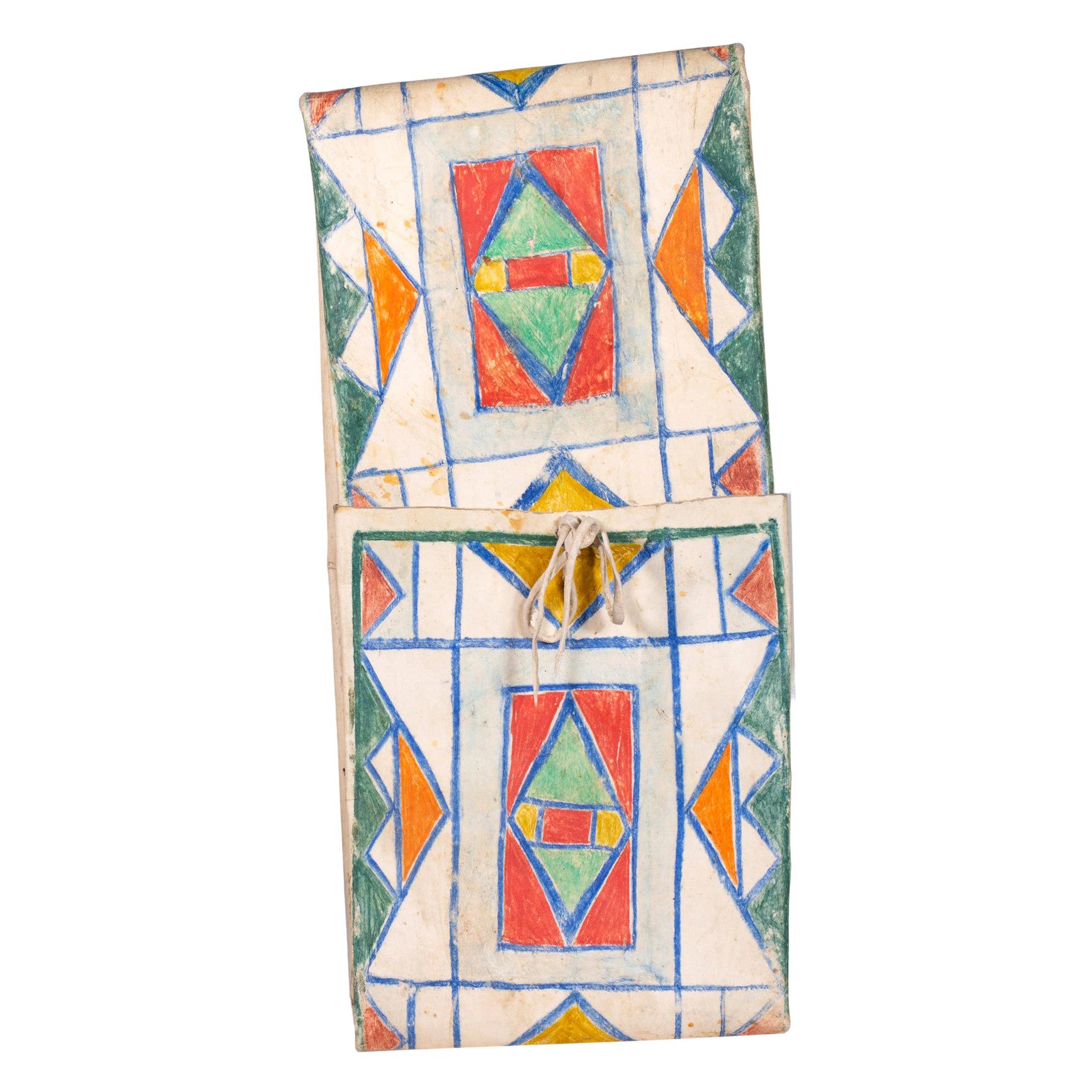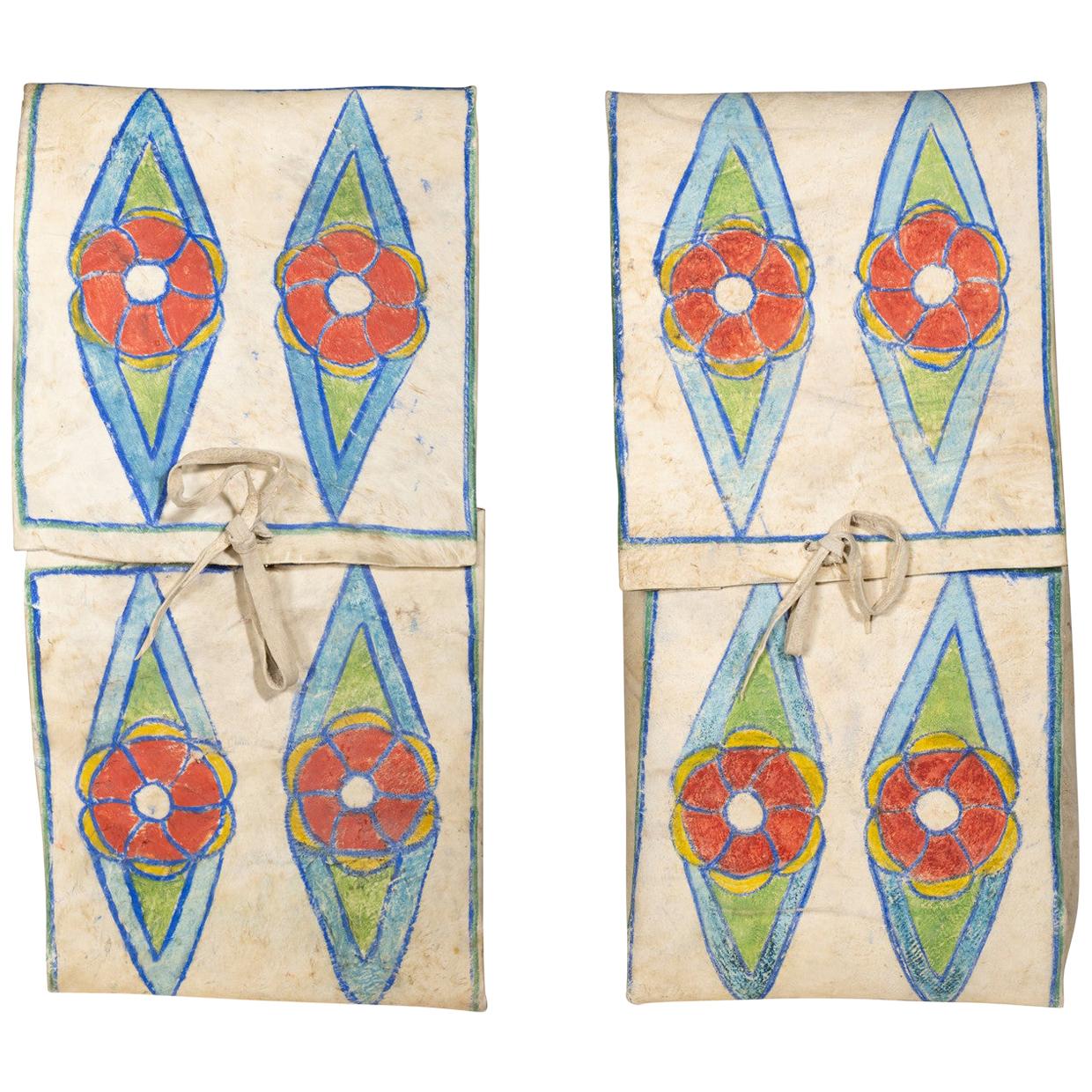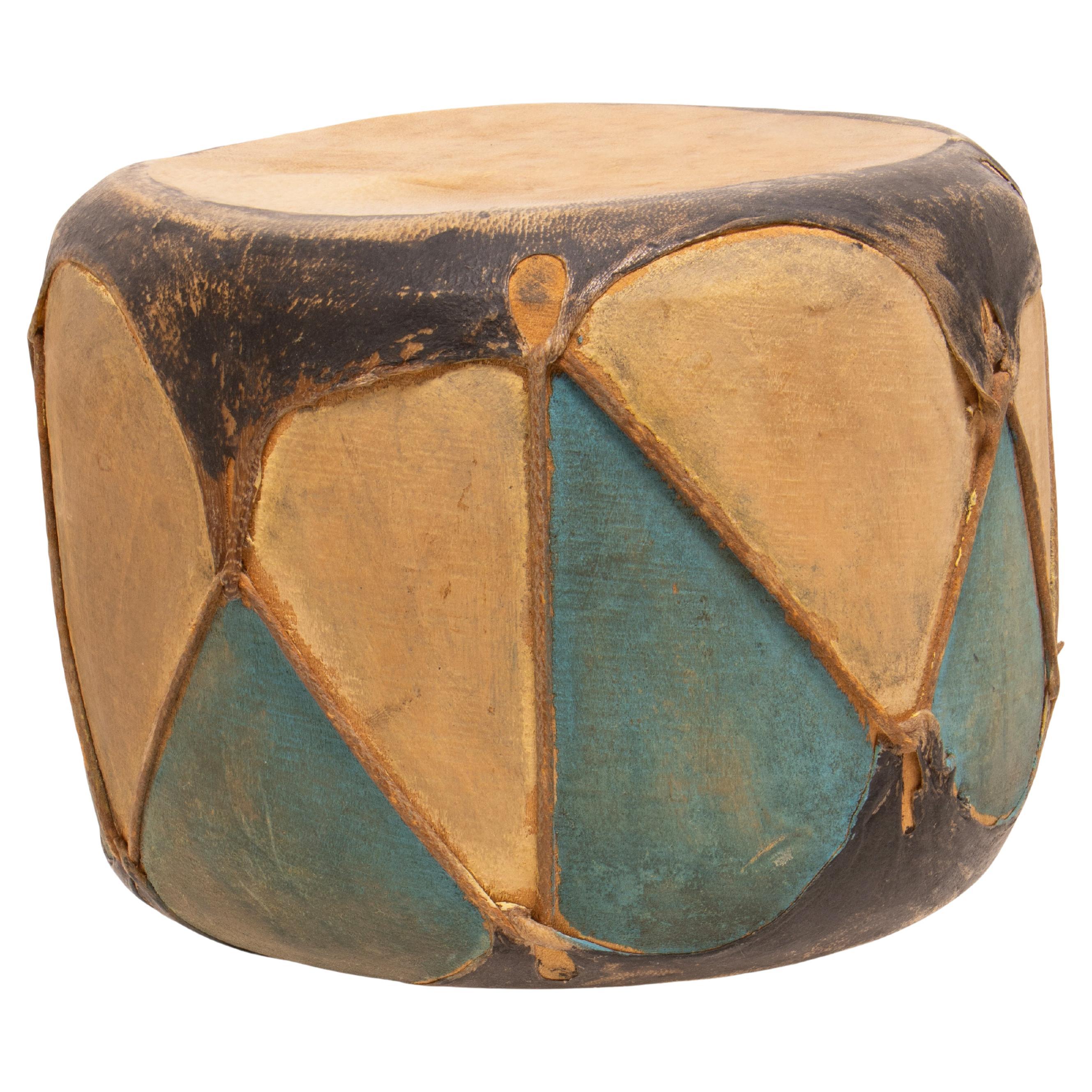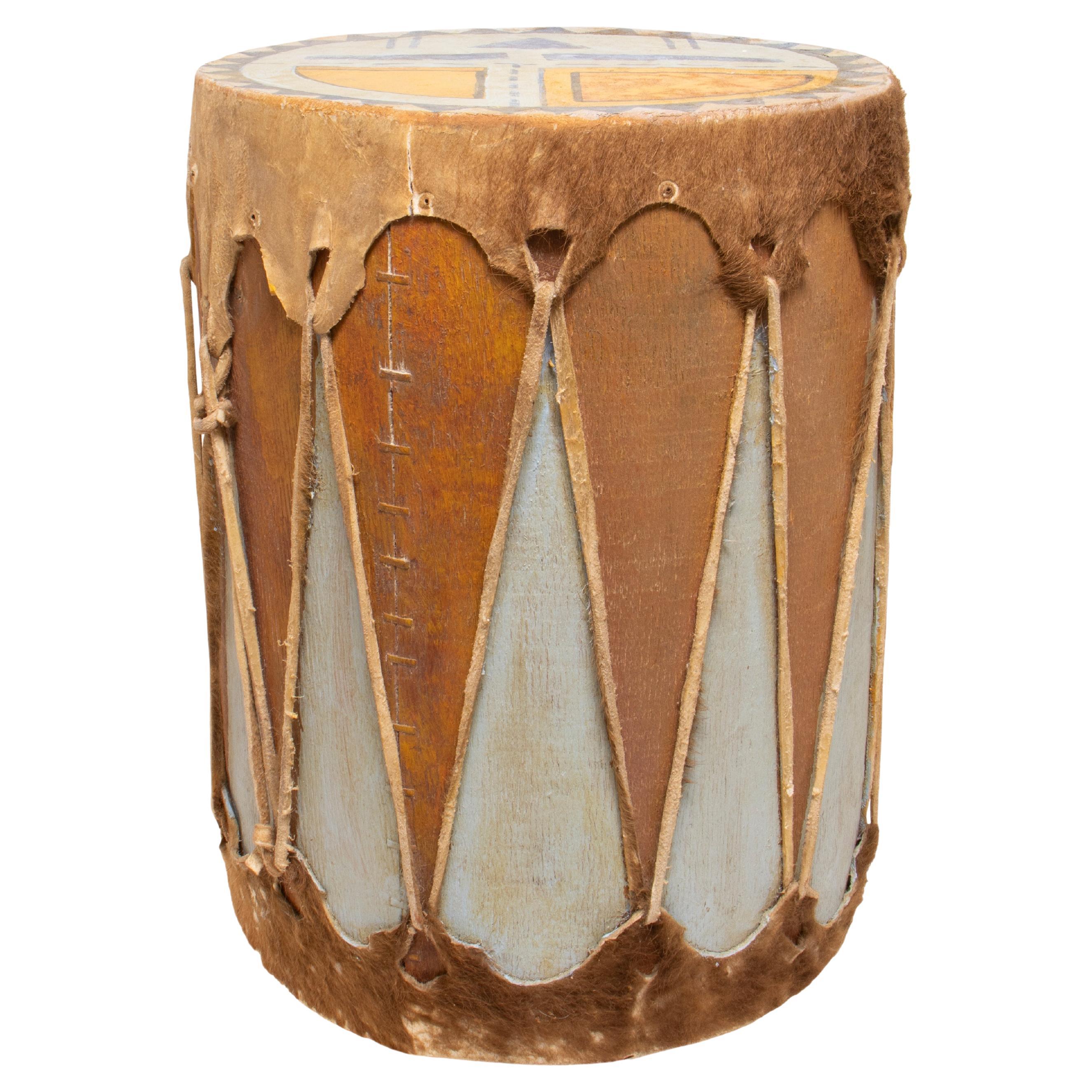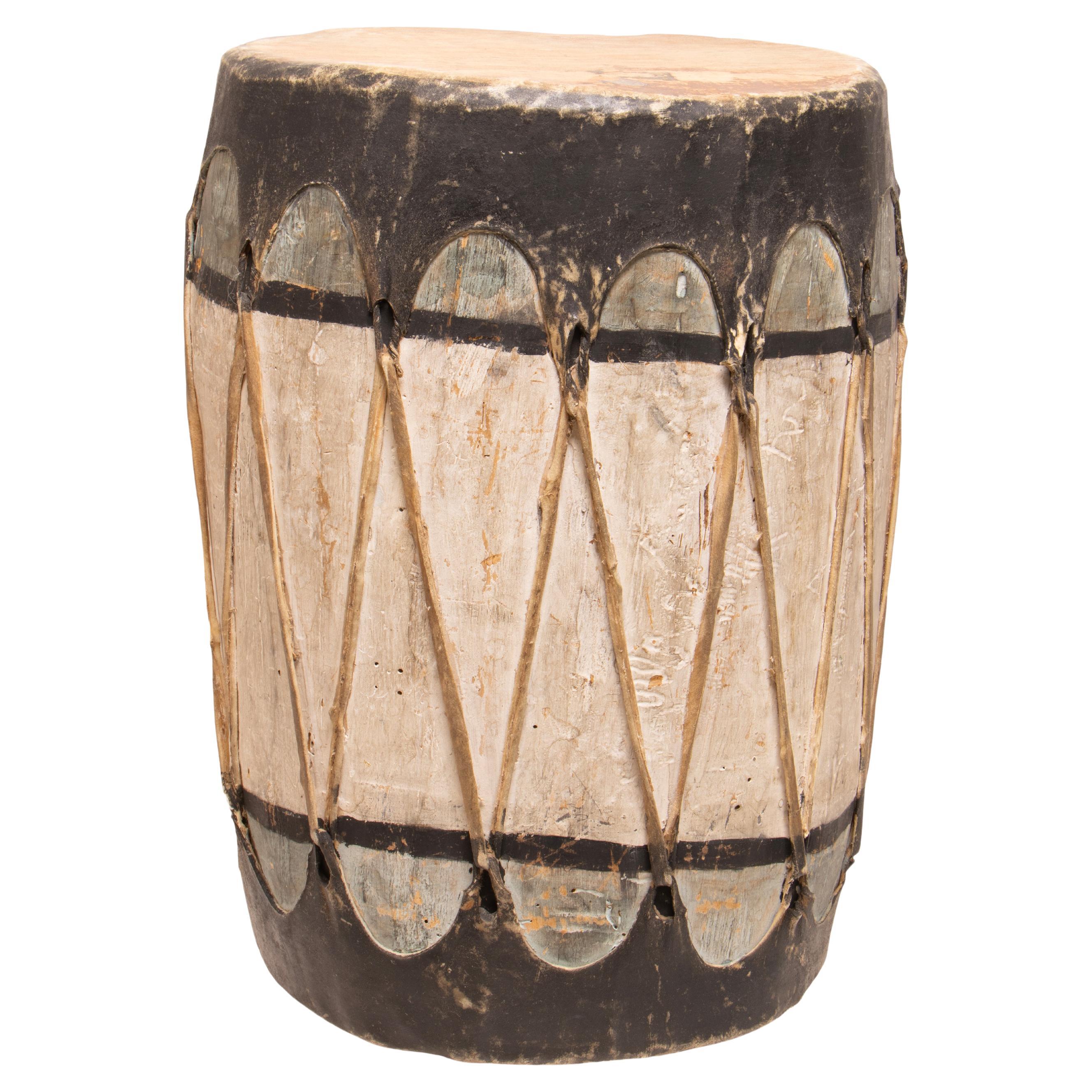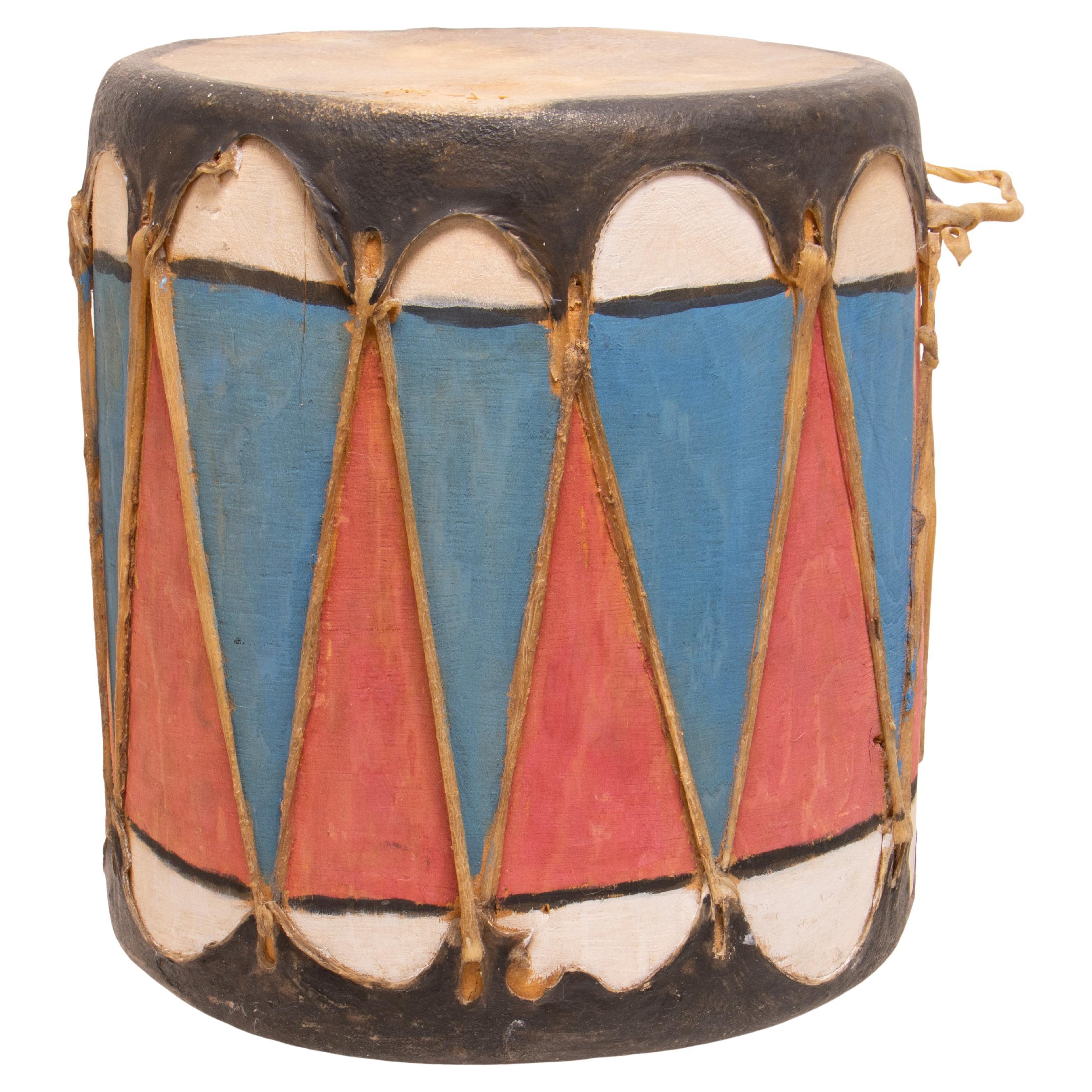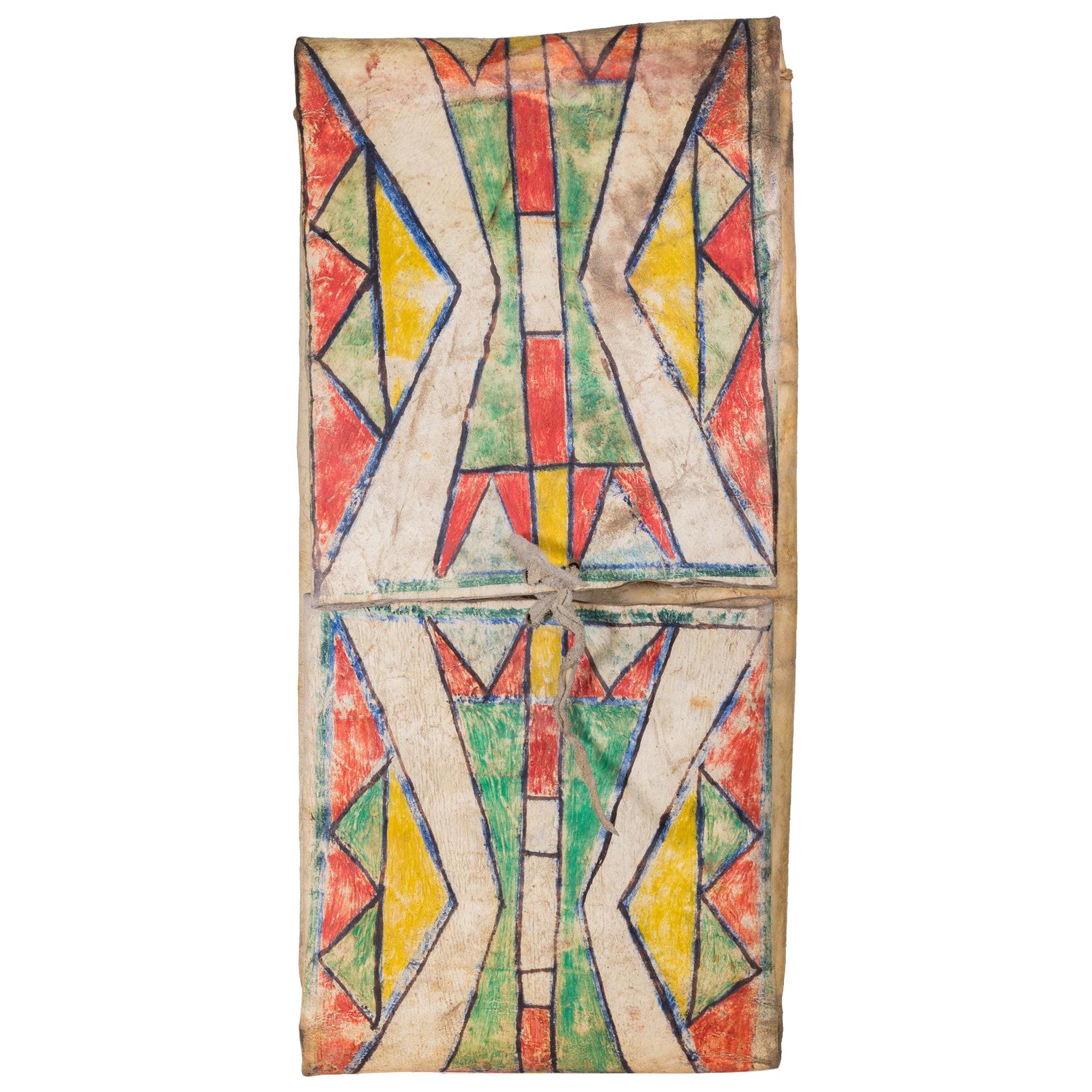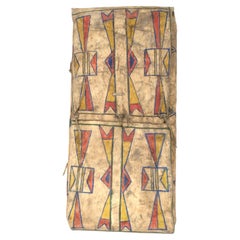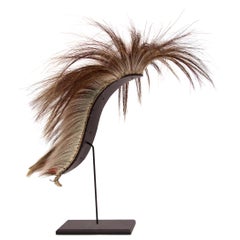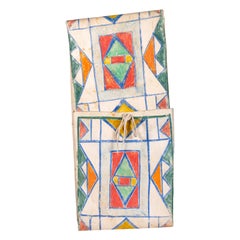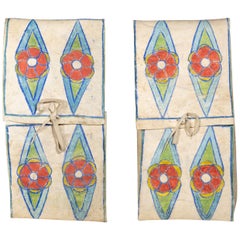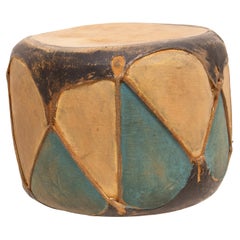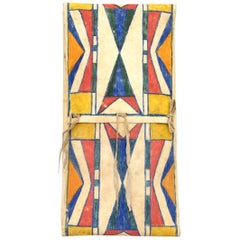
Antique Native American Abstract Painted Parfleche Envelope, Plateau, circa 1890
View Similar Items
Want more images or videos?
Request additional images or videos from the seller
1 of 6
Antique Native American Abstract Painted Parfleche Envelope, Plateau, circa 1890
About the Item
- Creator:Native American Art (Artist)
- Dimensions:Height: 28 in (71.12 cm)Width: 13 in (33.02 cm)Depth: 2.75 in (6.99 cm)
- Style:Native American (In the Style Of)
- Materials and Techniques:
- Place of Origin:
- Period:
- Date of Manufacture:circa 1890
- Condition:Wear consistent with age and use. .
- Seller Location:Denver, CO
- Reference Number:Seller: DCG-192731stDibs: LU1004614572551
About the Seller
5.0
Recognized Seller
These prestigious sellers are industry leaders and represent the highest echelon for item quality and design.
Established in 1979
1stDibs seller since 2013
143 sales on 1stDibs
Typical response time: 7 hours
More From This SellerView All
- 1870s Transitional Plateau Rawhide Parfleche Envelope with Geometric PatternsBy Plateau IndiansLocated in Denver, COA parfleche container in an envelope form, finely painted in an abstract design. Makes a stunning wall hanging alone or in a grouping with other parfleche or can be placed on a shelf or Stand. This was created by a North American Indian living in the Plateau cultural area - encompassing portions of what is now northern Idaho, western Montana, northeast and central Oregon, eastern Washington and southeast British Columbia. The tribes from this region include Kalispel, Flathead, Kutenai, Palus, Coeur D'Alene and Nez Perce. Parfleches are rawhide containers which were fundamental to the Plains way of life. Functioning essentially as protective travelling suitcases, they enabled the nomadic tribes to effectively pursue buffalo herds and migrate between seasonal camps. So critical were they to a nomadic existence that over 40 tribes are known to have historically produced parfleches. Collectively, these tribes inhabited an area which encompassed the entirety of the Plains, as well as the parts of the Southwest, the Transmontane and Western Plateau regions. Parfleches were, out of necessity, robust and versatile objects. They were designed to carry and protect within them anything from medicinal bundles to seasonal clothing or food. In fact, it was because of the containers’ robusticity and variety that parfleches earned their name in the Anglo world. Derived from parer (to parry or turn aside) and fleche (arrow), the word parfleche was coined by 17th century French Canadian voyageurs and used to describe indigenous objects made from rawhide. Despite their common utilitarian function, parfleches served as one of the major mediums through which Plains Indian tribes could develop their long-standing tradition of painting. In fact, it is in large part due to the parfleche that tribal style emerged. Even though parfleche painting developed simultaneously with beading and weaving, painting as an artistic tradition held particular importance in tribal culture. Believed to have evolved from tattooing, it had always been used as a conduit through which tribal and individual identity could be expressed. As such, many tribeswomen were deeply committed, some even religiously, to decorating their parfleche either with incised or painted motifs that were significant to them and/or the tribe. For some tribes, such as the Cheyenne, the decorative processes which surrounded parfleche production were sacred. For others, it seems that their parfleche designs shared an interesting artistic dialogue with their beadwork, indicating a more casual exchange of design motifs. This particular relationship can be seen in Crow parfleche...Category
Antique Late 19th Century North American Native American Native American...
MaterialsHide
- Native American Parfleche Box, Sioux, 19th Century Painted Hide PlainsBy Sioux Indian ArtLocated in Denver, COAntique Sioux (Native American/Plains Indian) Parfleche in a box form constructed of rawhide and intricately painted in an abstract design with hourglass and geometric motifs with natural pigments and red trade cloth. At the time this was created, the Sioux Indians were nomadic and are associated with vast areas of the Great Plains of the United States including present-day North and South Dakota, Minnesota, Nebraska and Montana. Authenticity is guaranteed. Box is in very good condition - please contact us for a detailed condition report. Parfleches are rawhide containers which were fundamental to the Plains way of life. Functioning essentially as protective travelling suitcases, they enabled the nomadic tribes to effectively pursue buffalo herds and migrate between seasonal camps. So critical were they to a nomadic existence that over 40 tribes are known to have historically produced parfleches. Collectively, these tribes inhabited an area which encompassed the entirety of the Plains, as well as the parts of the Southwest, the Transmontane and Western Plateau regions. Parfleches were, out of necessity, robust and versatile objects. They were designed to carry and protect within them anything from medicinal bundles to seasonal clothing or food. In fact, it was because of the containers’ robusticity and variety that parfleches earned their name in the Anglo world. Derived from parer (to parry or turn aside) and fleche (arrow), the word parfleche was coined by 17th century French Canadian voyageurs and used to describe indigenous objects made from rawhide. Despite their common utilitarian function, parfleches served as one of the major mediums through which Plains Indian tribes could develop their long-standing tradition of painting. In fact, it is in large part due to the parfleche that tribal style emerged. Even though parfleche painting developed simultaneously with beading and weaving, painting as an artistic tradition held particular importance in tribal culture. Believed to have evolved from tattooing, it had always been used as a conduit through which tribal and individual identity could be expressed. As such, many tribeswomen were deeply committed, some even religiously, to decorating their parfleche either with incised or painted motifs that were significant to them and/or the tribe. For some tribes, such as the Cheyenne, the decorative processes which surrounded parfleche production were sacred. For others, it seems that their parfleche designs shared an interesting artistic dialogue with their beadwork, indicating a more casual exchange of design motifs. This particular relationship can be seen in Crow parfleche...Category
Antique Late 19th Century American Native American Native American Objects
MaterialsHide
- Roach Headdress, Antique Native American, Plains Indian, 19th CenturyBy Native American ArtLocated in Denver, COAntique 19th century Native American (Plains Indian) roach headdress made with dyed deer hair and porcupine guard hair on a u-shaped braided cloth with...Category
Antique 19th Century American Native American Native American Objects
MaterialsFur
- Original Large Painting, Native American Ledger Drawing Style by Randy Lee WhiteLocated in Denver, COOriginal painting by Randy Lee White Native American Indian ledger style in acrylic on canvas with assemblage including feather and wood. Wrapped canva...Category
20th Century American Native American Paintings
MaterialsAcrylic
$2,175 Sale Price51% Off - Antique Native American Kachina Doll, "HeHeya Clown, " Hopi, Early 20th CenturyBy Native American ArtLocated in Denver, COHopi HeHeya Clown carrying a watermelon and backpack from the 1st quarter of the 20th century. Made of wood with pigments, dimensions measure 11 ½ x 3 ½ x 3 ¾ inches. The Heheya K...Category
Early 20th Century American Native American Native American Objects
MaterialsWood
- Vintage Pueblo Native American Old Pawn Ingot Silver Bracelet, Turquoise c. 1915By Native American ArtLocated in Denver, COVintage Southwestern Native American Pueblo Old Pawn cuff bracelet, circa 1915. Stamped ingot silver with a turquoise cabochon. The inner bracelet circumference measures approximatel...Category
Early 20th Century American Native American Native American Objects
MaterialsMulti-gemstone, Silver
$2,120 Sale Price20% Off
You May Also Like
- Plateau Parfleche Envelope, circa 1900By Plateau IndiansLocated in Coeur d'Alene, IDPlateau painted parfleche envelope painted in green, blue, orange, yellow and red. Period: circa 1900 Origin: Plateau Size: 28" L x 12" W. Family ...Category
Antique Early 1900s American Native American Native American Objects
MaterialsOther
- Pair Plateau Parfleche PacketsBy Plateau IndiansLocated in Coeur d'Alene, IDMatched pair of Plateau parfleche packets with diamonds and stylized flowers and brain tanned ties. Difficult to find a pair. Very nice, rare design. The term parfleche was first co...Category
Antique Early 1900s American Native American Native American Objects
MaterialsOther
$11,500 / item - Native American Cochiti Painted DrumBy Native American ArtLocated in Coeur d'Alene, IDSmall Native American Cochiti painted drum with sides painted in mustard yellow and blue with black striping. Made of wood and hide. Period: Early 20th century Origin: Southwest, ...Category
Early 20th Century American Native American Native American Objects
MaterialsWood
- Native American Cochiti Painted DrumBy Native American ArtLocated in Coeur d'Alene, IDNative American Cochiti painted drum with painted ends, turquoise painted sides made of Hereford hide. Period: Early 20th century Origin: Southwest, Cochiti Size: 11"D x 15"H Fa...Category
Early 20th Century American Native American Native American Objects
MaterialsWood
- Native American Pueblo Painted DrumBy Native American ArtLocated in Coeur d'Alene, IDNative American Pueblo painted drum. Classic and colorful cottonwood drum with rawhide skin sides painted red, white and blue. Period: Mid 20th century Origin: Southwest, Cochiti ...Category
Mid-20th Century American Native American Native American Objects
MaterialsWood
- Native American Cochiti Painted DrumBy Native American ArtLocated in Coeur d'Alene, IDNative American Cochiti drum with sides painted in tan, yellow and blue with black striping. Made of wood and hide. Period: Early 20th century Origin: ...Category
Early 20th Century American Native American Native American Objects
MaterialsWood
Recently Viewed
View AllMore Ways To Browse
Antique American Folk Paintings
Vintage Plateau
Southwest American Antiques
Antique Furniture Oregon
Southwest Folk Art
Antique American Folk Art Painting
Antique Camp
Vintage Camping Furniture
Weave Shelf
Crow Indian Art
Painted Canadian Antique
Vintage French Suitcase
Antique Indian Shelf
Native American Wall Hanging
Antique Travel Suitcase
Beadwork Native American
Antique Food Containers
Canadian Indian Art
